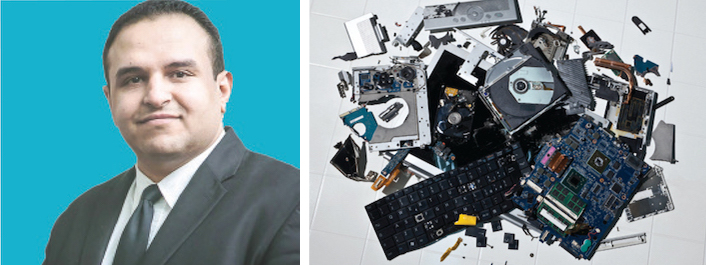How to Prepare for the Future of Work

Some major companies have implemented return-to-work policies, but at what cost? Disney CEO Bob Iger demanded in January that all employees come to the office at least four days a week because, “In a creative business like ours, nothing can replace the ability to connect, observe, and create with peers that comes from being physically together.”
Apple CEO Tim Cook expressed similar sentiments when he mandated that employees show up at least three days per week since, “Innovation isn’t always a planned activity. It’s bumping into each other over the course of the day and advancing an idea that you just had. And you really need to be together to do that.”
Yet is this true? On the one hand, research at MIT found that remote work weakens the cross-functional, inter-team “weak ties” that form the basis for the exchange of new ideas that tend to foster innovation. Along the same vein, a study by Microsoft concluded that remote work weakens innovation since workers communicate less outside their teams.
On the other hand, McKinsey & Company research pointed to a different verdict. It determined that during two plus years of the COVID-19 pandemic, a record number of new patents was filed across 150 global patent filing authorities. Moreover, in 2021 global venture capital more than doubled from 2020, rising 111 percent. McKinsey suggests that this is because more innovative companies developed new ways of connecting remote workers to build and sustain the cross-functional, inter-team ties necessary for innovation, thus widening the pools of minds that could generate new ideas. Deloitte similarly highlighted how adapting the process of innovation to remote settings offers the key to boost innovation for hybrid and remote teams.
My experience helping 21 organizations transition to hybrid and remote work demonstrates that innovation is achievable. But it requires adopting best practices that address the weakening of cross-functional connections and the lack of natural, spontaneous interactions that breed innovation. An excellent technique to replace those hallway chats involves collaboration software like Slack or Microsoft Teams. I suggest setting up a specific channel to facilitate the creativity and collaboration behind serendipitous innovation – and incentivizing employees to use that channel.
For example, at a late-stage SaaS startup that used Microsoft Teams, each small team of six to eight people set up a team specific channel for members to share innovative ideas relevant to the team’s work. Likewise, larger business units established channels for ideas applicable to the whole unit. Then when anyone had an idea, they were encouraged to share it in the pertinent channel. We encouraged everyone to pay attention to notifications. Seeing a new post, if they found the idea relevant, they would respond with additional thoughts building on it. Responses would snowball, and strong ideas would lead to next steps, often a brainstorming session.
This approach combines a native virtual format with people’s natural motivations to contribute, collaborate, and claim credit. The initial idea poster and the subsequent contributors aren’t motivated simply by the goal of advancing the team or business unit, even though that’s, of course, part of their goal set. The initial poster is motivated by the possibility of sharing an idea that might be recognized as innovative, practical, and useful, with some revisions. The contributors, in turn, are motivated by the natural desire to give advice, especially since it is visible to and useful for their team, business unit, or organization.
This dynamic also fits well with the different personalities of optimists and pessimists. The former will generally be the ones to post initial ideas. Their strength is innovative and entrepreneurial thinking, but their flaw is being risk-blind to potential problems. In turn, pessimists will overwhelmingly improve the idea, addressing potential pitfalls.
Remember to avoid undervaluing the contributions of pessimists. It’s too common to pay excessive attention to the initial ideas and overly reward optimists – and I say this as an inveterate optimist who has 20 ideas before breakfast and thinks they’re all brilliant. Through the combination of personal experiences and research on optimism and pessimism, I have learned the necessity of letting pessimistic colleagues vet and improve my ideas. My clients have found significant benefit in highly valuing such devil’s advocate perspectives as well.
That’s why you should praise and reward not only the innovative idea generators, but also the two or three people who most contributed to improving and finalizing the idea. And that’s what the late-stage start-up company did. The team or business unit leaders made sure that they publicly recognized them and also gave them a bonus proportionate to the value of their contributions. Indeed, several of these ideas ended up prompting patent applications.
While this technique helps address the problem of missing spontaneous interactions, what about the weakening of cross-functional ties? To tackle that challenge, while also improving the integration of new staff, we had the SaaS company set up a hybrid and remote mentoring program involving several mentors. One came from the new staff’s team, assisting the mentee with understanding group dynamics, on-the job learning, and professional growth.
However, we also included two mentors from other teams. One was in the same business unit as the junior staff, while another came from a separate unit. The role of these mentors involved getting the new employee integrated into the broader company culture, facilitating inter-team collaboration, and strengthening the “weak ties” among company staff to foster collaboration.
Six months after these interventions, the SaaS company reported a notable boost in innovation across the board. The channels devoted to innovation helped breed a number of novel projects. The mentor-mentee relationships resulted in mentees providing a fresh, creative perspective on the company’s existing work, while the mentors from outside the team helped spur productive conversations within the teams, breeding further innovation and collaboration.
If a late-stage start-up with 400 employees could adopt these techniques, so too can major companies like Disney and Apple. Certainly, some tasks may best be done in person, such as sensitive personnel conversations, intense collaborative discussions, key decision-making, strategic conversations, and fun team-building events. But otherwise, the more you can do remotely, the better.
Unfortunately, companies like Disney and Apple that have adopted a traditionalist perspective on how to innovate are ironically hindering innovation by losing talented people due to return-to-work mandates. The future belongs to companies that best make use of the most creative people around the globe by adopting best practices for hybrid and remote work – instead of being stuck in the past.
Subscribe today and gain a strategic advantage from the emerging trends and best leadership practices found within Real Leaders magazine.
Gleb Tsipursky, Ph.D., is the CEO of Disaster Avoidance Experts, a future-of-work consultancy based in Columbus, Ohio, and author of Leading Hybrid and Remote Teams: A Manual on Benchmarking to Best Practices for Competitive Advantage.





Responses